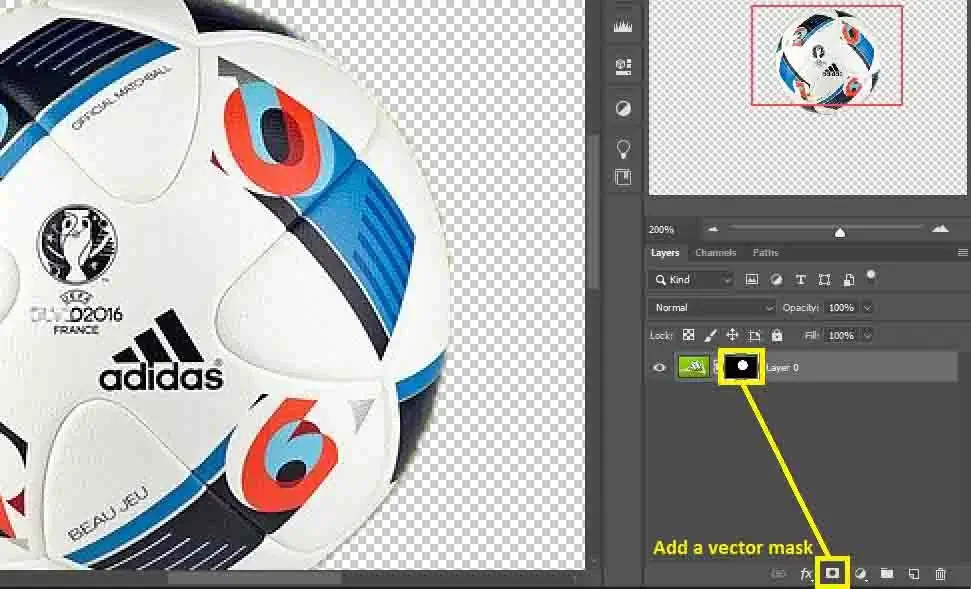Image Masking in Photoshop is a well-known photo editing process for the image subject. The operation is very easy, but the utilization is quite useful for all kinds of needs. However, there are other operations similar to Image Masking. They are also standing not the same but with similar quality importance in the digital era.
However, the masking process allows a designer to work with more accuracy with less effort. Well, less effort is a conditional term for the subject that the process is helpful in the long run. Let’s jump on the matter and learn more about Image Masking ‘How and Why’.
What is Image Masking?

Image Masking is a background removing methods if we consider the root name. So, the process we do is concerning the image subject and the background. Also, the term is special depending on the image subject and the edge we need to handle.
Other Background Removal services that we can use for the image subject have a specific area of expertise. But cutout with Image Masking is a process that is effective for all kinds of images so far. So, the non-destructive editing process for cutout image subjects is Image Masking.
Services That Are Close to Image Masking
As the mother editing service name of Image Masking, there are some similar ones as well. We are not saying the service we are discussing here is completely different than others. But the characteristics are fascinating which makes this one unique. For the same reason, this one is popular with graphic designers at an advanced level.
Some services of image masking are given below.
- Background Changing Service
- Clipping Path Service
- Cut Out Service
- Deep Etch Service
- Alpha Channel Masking
How Image Masking Works?

Making a selection is one thing and if you want convenience, you need to use the right method. In Photoshop, you will see several methods of making a selection. But all are not meant for any selection. Every one of those has individual areas of expertise. So, you may use one method to select various types of subjects.
But you may not have the perfection in all of them. For example, subjects with hard edges are easy to select with the quick selection tool. You may also use the Clipping Path method for these types of subjects. For soft-edged subjects, you should use the Select & Mask option. Well, you can do the selection first and smoothen the edges later. But that will be a little long task to do.
As we are using Photoshop for Image Masking, we will learn this program’s selection methods. We will go in brief because describing all of them is really a time-consuming matter.
We will come up with the selection methods in the near future. The selection tools in Adobe Photoshop are;
- Geometric Marquee Tool: Rectangular Marquee Tool, Elliptical Marquee Tool, Single Row Marquee Tool, Single Column Marquee Tool.
- Lasso Tool: Regular Lasso Tool, Polygonal Lasso Tool, Magnetic Lasso Tool.
- Quick Selection Tool: Quick Selection Tool, Magic Wand Tool.
- Pen Tool: Basic Pen Tool, Freeform Pen Tool, Curvature Pen Tool.
Step 1: Making A Selection
The first thing about Image Masking in Photoshop is the selection. Well, Photoshop has multiple tools to make a selection that we already know. The subject and the background of the photographs define which selection tool is appropriate.
As for simple instructions, you can use the Select & Mask option for the subjects with soft edges. For hard-edged subjects, you can use any other selection tool that you find convenient. We will come up with the selection tools blog in the near future where you will learn more.
For the time being, we are using the quick selection tool to select the subject that we are going with.

In the photograph, we have a soccer ball on a field. We have selected the ball with the quick selection tool. You can do it by simply clicking the ‘Quick Selection Tool’ from the Tools panel. Then click and move over the subject area until you select the whole area.
You can increase or decrease the brush size by pressing the keyboard keys “]” and “[“. Also, you can do this, press and hold Alt/Option for Win/MAC and click the right mouse button & move right or left. Each procedure does the same thing only in different ways.
Step 2: Mask Addition
a. Vector Mask

When you are satisfied with the selection, it is time to add the mask. Adobe Photoshop has two ways to add a Layer Mask. Click on the ‘Add a vector mask’, located at the bottom of the Layers panel. Clicking this, you will have the mask according to the selection.
b. Select and Mask After Making a Selection

Another way of adding a mask is, to right-click on the selected area and left-click on the ‘Select & Mask’ option. A new window will open where you can edit and modify even more. Also, you will see some more options to polish the edges with Photoshop artificial intelligence.
In the output settings, you will have options to choose how you want the selected area. In general, you need to choose ‘Layer Mask’ and press OK to continue.
c. Select & Mask Before Making a Selection

You can follow the second option directly. Just use the ‘Select & Mask’ option when you are using a selection tool. As soon as you click on that button, you will have your image in a new window. Then, make the necessary changes and save the selection as a ‘Layer Mask’.
By the way, if you go through this, you can also use the ‘Select Subject’ option. Photoshop will do some calculations and select the subject by artificial intelligence. And you can modify the selection here as well.

If you have an image with a subject that is not super complex, Photoshop can do the selection better than you can imagine. The example is as below. Here, the subject (Football) is clear to look at which is selected. And the area around the ball is like onion skin which is not selected.
Step 3: Apply Layer Mask

When you have the masking complete, apply the mask to the layer so that you can work easily. Right-click on the mask and select the ‘Apply Layer Mask’ option.
Now, you will have the subject only and do whatever you want to. You can add another background or use a solid color instead. Also, you can add a Drop Shadow or any shadow you want. For product photographs, we use the Drop Shadow the most.
Step 4: Save
After you complete all the editing, it is time to save the file. Well, you can save the image in any format you want. But it is better to save in PSD format first for further editing if you need it. When you have this format, you can do more editing on the subject or change it if you need to. Also, you can save in many other formats you need like JPEG, PNG, TIFF, etc.
Why Do You Need Image Masking?
The necessity of Image Masking is huge in Photo Editing Services. The basic one is to isolate the subject from the background without harming it. Well, the editing method opens up the doors to do more in photo editing with facilities.
You may have a question, if you remove the background with Image Masking why not use other ways for that? Yes, you can use other ways to remove the background only. But you can use the masking process when other ways are failing to do that. So, let us know, why we need Image Masking in Photoshop for photo editing.
- Remove or replace the existing background for further use.
- The non-destructive technique allows you to work easily.
- To cut, replace, or modify an area with less effort.
- To show or hide any area with the simple use of brushing.
- Clipping Mask to use the image as a text file gives an exceptional impression.
- For making Photo Collage with the advantage of going back anytime you need to.
Conclusion
Image Masking is a non-destructive process that helps you to add a mask and remove that whenever you need to. Well, it is a process to isolate the subject from the background, but with advanced options. Further editing is never so convenient with this.
Moreover, you can handle almost every subject with less effort. Also, you can apply the mask if you want but that would be destructive then. Image Masking in Photoshop is a revolution in the Graphic Editing World.
FAQ | Image Masking in Photoshop
What Does Masking Mean?
Masking means using a layer over photographs to show or hide the area according to need. Adobe Photoshop brings you the most convenient way of Image Masking.
What is Masking in Photography?
Masking is the post-processing of photography that allows you to work non-destructive. The operation is not the same as a real mask but amazing for digital photo editing.
What is the Purpose of a Layer Mask?
The purpose of a Layer Mask is to do non-destructive photo editing. Especially to show or hide areas you may need to.

